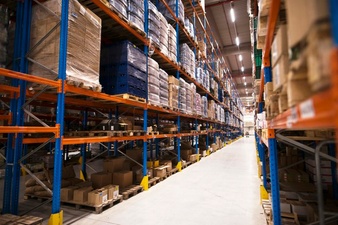Focus on material handling if you want to concentrate on one idea to maximize warehouse efficiency, raise staff morale, and protect jobs all at the same time.
There are a lot of moving parts in a factory. Quite literally. It’s for this reason that sloppy material handling has far-reaching implications. It has an effect on production flow, employee safety, and employee morale, for better or worse. Understanding material handling systems and enforcing best practices, on the other hand, will dramatically increase the efficiency of your warehouse.
In warehouses, assembly facilities, and distribution centers, material processing has a significant effect on productivity. An unreliable facility leads to mistakes and delays, eroding consumer satisfaction and making it easier for the competitors to steal your customers. Here are some tips to keep your warehouse running smoothly and efficiently.
1. Have a Command Center:
Some warehouses can be a hodgepodge of conveyors, racking, and forklifts. To manage these moving parts, you will need to establish a command center.
Having a central location or factory office will make it easy for managers and overseers to direct operations and will give workers a place to go to ask questions. This office can be located directly on the floor and should be enclosed to help block out the noise of the factory or warehouse floor.
2. Buy Forklifts:
Any efficient warehouse dealing in a large volume of products, either big or small, will need at least one well-maintained forklift. Electric forklifts provide quiet, efficient, and exhaust-free service. You don’t have to worry about the safety hazards of propane or gas when you have an electric forklift either.
If your warehouse is tight on space, consider utilizing a stand-on forklift. Whichever you choose, make sure all employees are thoroughly trained on that specific machine. Also, you will need to keep detailed service and pre-use check logs for safety.
3. Create Storage Areas:

You build storage units that are suitable for your warehouse in the same way that you choose storage units for various rooms in your home. The type, size, and position of your storage racks, bins, and shelves will be determined by the nature of your company. Let the warehouse room work for you rather than against you.
Everything in your warehouse should be labeled for quality, communication, and protection. This also includes workspaces, safety risks, aisles, shelves, and products all need to be numbered. Forklifts, clearance heights, and capacity warnings, in particular, must include safety signs.
4. Use Automated Tools:
Increasing the inventory of automated tools, such as those described in the engineering systems category improves material handling and performance.
For example, if your company deals with a large number of products and has limited space, an automated storage and retrieval system (AS/RS) could be beneficial. This computer-controlled device stores and retrieves merchandise from pre-determined warehouse locations automatically.
5. Use Scanners:
RFID scanners have a number of advantages over conventional barcode scanners. RFID scanners, unlike barcode scanners, do not require line-of-sight access, reducing the amount of material handling. Furthermore, RFID scanners can detect inventory from a distance of up to 40 feet for a fixed reader, 20 feet for a handheld reader, and over 100 feet for an active UHF RFID device.
RFID scanners allow warehouses to collect more data about their activities, paving the way for more material handling improvements.
6. Implement a Warehouse Management System:
A warehouse management system provides you with insight into your entire warehouse process. Although a WMS has numerous advantages, it is particularly useful in material handling because of the use of advance ship notices. When a warehouse receives an ASN, it is notified that shipments are on their way, allowing them to prepare ahead by scheduling workers and freeing up equipment.
A warehouse can be a complex place with many moving parts. Having the right tools and equipment for your business can help keep your warehouse running smoothly and efficiently.





















